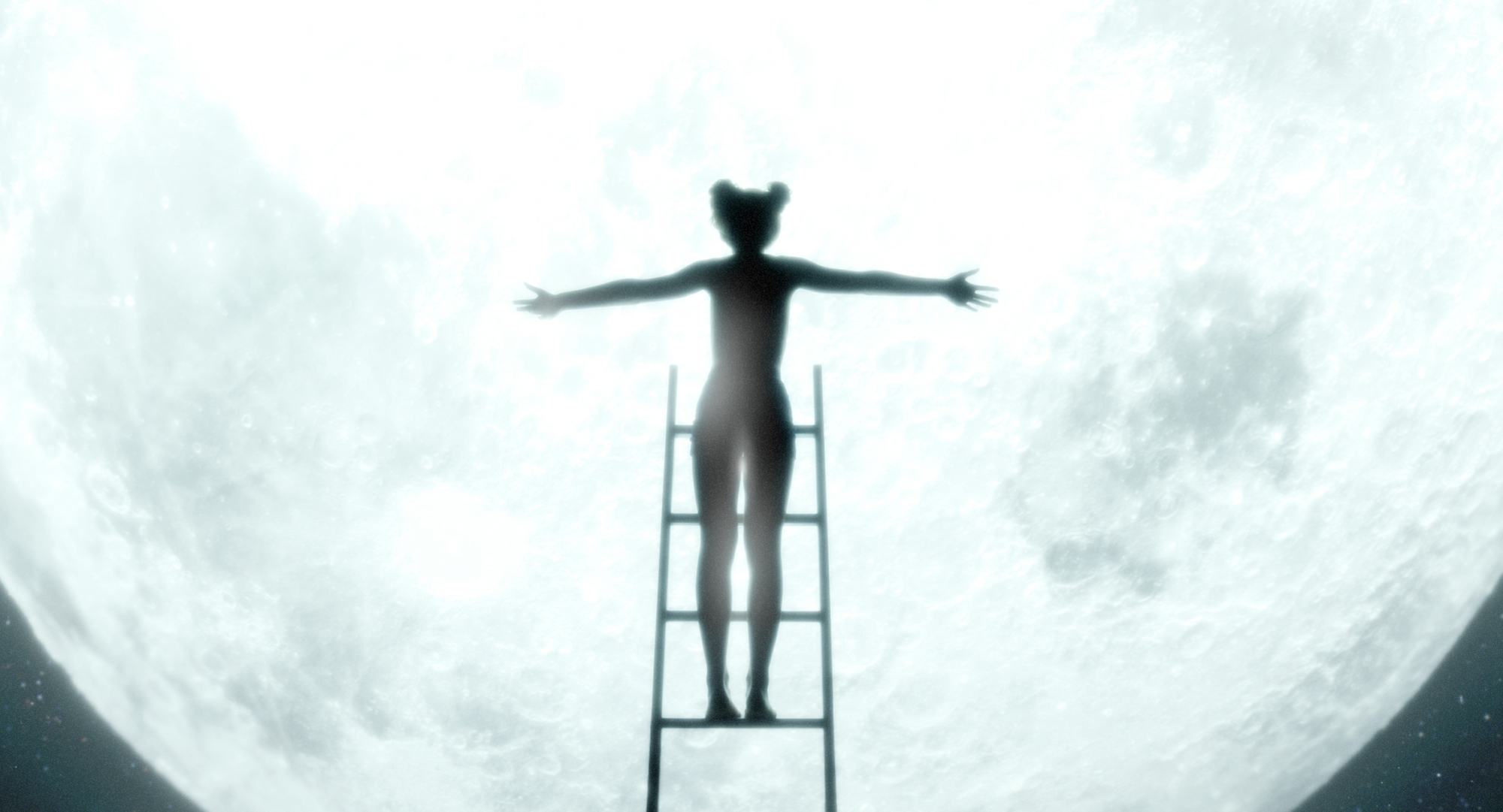Insect imagery abounds in Blaze (2022), the first feature film from two-time Archibald Prize–winning artist Del Kathryn Barton: glistening, chitinous textures; feathery antennae; a background droning buzz often rising to prominence on the soundtrack at times of realisation or revelation. It’s a fitting motif – Blaze is, after all, a coming-of-age story. The title character, played with impressive openness by Julia Savage, is a twelve-year-old girl on the verge of adolescence: a larva about to transform, to extend the insect metaphor. The film charts her pupal stage as she becomes something new in a chrysalis of trauma. ‘I’m not the same, Dad,’ she tells her father, Luke (Simon Baker), who is helpless to comprehend his daughter’s changing nature – her journey to maturity at once an everyday occurrence (we all walk a similar road, after all) and an epic, nigh-mythic, psychological odyssey.
As in her paintings, Barton feels no need here to cleave to something so limiting as ‘realism’, and Blaze operates on a symbolic, impressionistic level more than anything else; while the film’s themes and concerns are very real, the visual language it uses to communicate them is wildly fantastical. Our opening image is of a human eye peering through a cracking insect shell, cluing us in that we are both peering into a process of transformation and adopting the point of view of someone undergoing that very metamorphosis. Immediately thereafter, we are shown a young girl, barely more than a toddler, sitting in front of five of Barton’s paintings as a disregarded baby bottle spills milk on the floor near her. The child’s eyes track across the paintings, absorbing images of pendulous breasts, writhing limbs and – although we don’t know it yet – an image of Zephyr, the huge-eyed, unicorn-horned, rather insect-like imaginary dragon who is the key inhabitant of Blaze’s mindscape. The images are disturbing, but the child is undisturbed; instead, she is observing these surreal, sexual images with clarity and calmness, confronting concepts she cannot possibly understand.
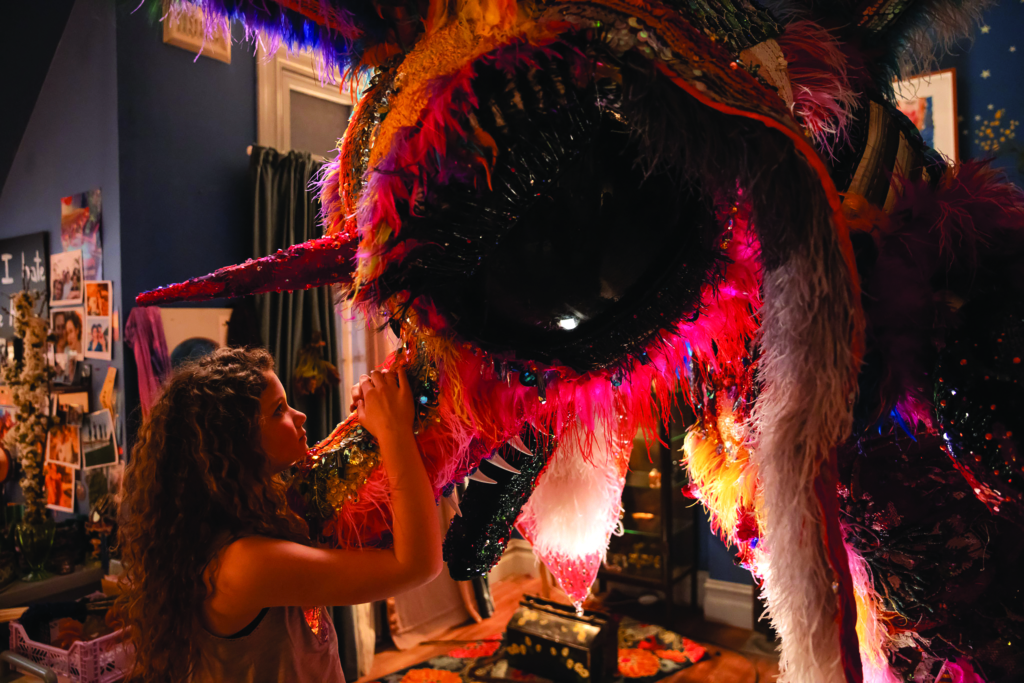
From there, we enter what is, in this context, the ‘real’ world of the film, proceeding at a fairly sedate pace to the inciting incident, which is a particularly brutal one. Walking through the back alleys near her inner-Sydney home, Blaze happens upon an argument between Jake (Josh Lawson) and Hannah (Yael Stone). They appear to be in a relationship, or possibly just ending one. The argument turns violent, and Jake rapes and kills Hannah in an extended, unflinching sequence. Blaze is, of course, horribly traumatised by the event, and while the ‘real world’ plot follows her experiences as she acts as the sole witness to the crime in the subsequent investigation, along with her struggle to come to terms with the reality and implications of what she has seen, the film’s focus shifts to Blaze’s symbol-laden inner world. As she attempts to synthesise her experience, this latter landscape is depicted through an impressive combination of live-action footage, puppetry and stop-motion animation.
Blaze operates on a symbolic, impressionistic level more than anything else; while the film’s themes and concerns are very real, the visual language it uses to communicate them is wildly fantastical.
Even the most unique film has stablemates that share points of comparison, and Blaze occupies space on the shelf marked ‘coming-of-age fantasy films’. The subgenre is only lightly defined, but essentially these are works that use the language and narrative of fantasy as metaphors for the process of adolescence, rendering the experience of growing up and maturation as a kind of epic quest. Often, these are ‘portal fantasies’: tales in which a character is literally transported to another world or realm, wherein characters and events act as metaphors for more mundane experiences that are nonetheless important and/or traumatic for the individual experiencing them. Consider The NeverEnding Story (Wolfgang Petersen, 1984) and Labyrinth (Jim Henson, 1986) as prime examples: in the former, reading the titular book and becoming connected with its vast fantasy world enables young protagonist Bastian (Barret Oliver) to process his grief over the death of his mother; while in the latter, teenager Sarah (Jennifer Connelly) is able to reconcile both her resentment towards her baby half-brother and her anger over her mother abandoning her by literally – in the film’s reality, at least – rescuing the tyke from Jareth the Goblin King (David Bowie), a direct representation of the man her actress mother left her family for.[1]While this backstory is only hinted at in the film through photographs and news clippings seen in Sarah’s bedroom, it’s made more explicit in ACH Smith’s 1986 novelisation of the film. See Louisa Mellor, ‘Labyrinth: The Unsettling Second Character Played by David Bowie’, Den of Geek, 27 June 2021, <https://www.denofgeek.com/movies/labyrinth-the-unsettling-second-character-played-by-david-bowie/>, accessed 5 September 2022. In both cases, the ‘reality’ of the fantasy sequences are questionable: are we to believe that The NeverEnding Story’s Fantasia is an actual conceptual space that contains all of humanity’s shared imagination, or that the inhabitants of Jareth’s Labyrinth only coincidentally mirror the toys and dolls in Sarah’s bedroom? It’s difficult to say, yet both films function independently of the individual viewer’s take on the material at hand – a difficult needle to thread.
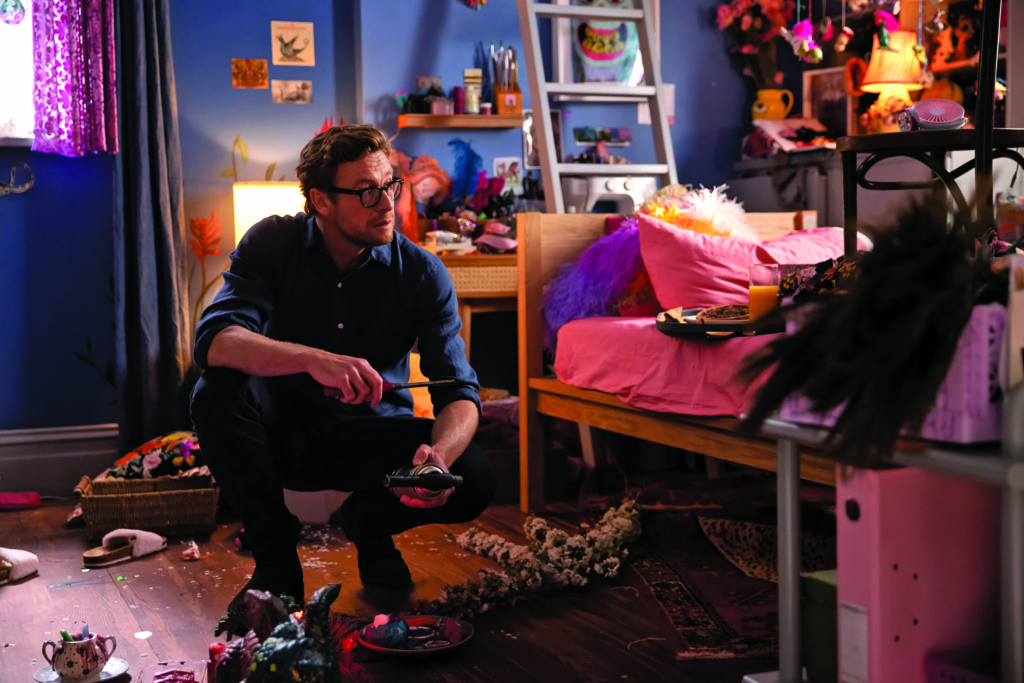
Blaze, however, is part of a different subset of the subgenre, in which the fantastical events depicted are explicitly metaphorical and not meant to be taken literally in any context. Australian and New Zealand cinema has offered a surprising number of films of this type: immediately springing to mind is Heavenly Creatures (Peter Jackson, 1994), in which the imaginary world shared by dual protagonists Pauline (Melanie Lynskey) and Juliet (Kate Winslet) – a grab bag of personally significant symbols including Orson Welles and Mario Lanza – grows in prominence in the narrative as the pair’s grip on reality grows weaker. Then there is Celia (Ann Turner, 1989), a 1950s-set coming-of-age tale in which the eponymous eight-year-old protagonist (Rebecca Smart) processes her grief over the death of her grandmother, the loss of her pet rabbit and myriad other anxieties through ritual-heavy fantasies, the entire exercise coming across as a sort of antipodean Lord of the Flies.[2]See Susan Bye, ‘Celia’, Metro, no. 213, 2022, pp. 114–23. Even Bliss (Ray Lawrence, 1985) belongs here – although, unlike the aforementioned films, it deals with a late-life transformation brought about by a heart attack, and whether Harry Joy (Barry Otto) is experiencing a metaphorical vision of the world following a near-death experience or some kind of spiritual purgatory is deliberately left unclear.[3]See Adrian Danks, ‘Bliss’, Metro, no. 207, 2021, pp. 108–19.
But Blaze’s closest cinematic neighbour is The Company of Wolves (Neil Jordan, 1984). Adapted from the short story of the same name in Angela Carter’s landmark 1979 collection The Bloody Chamber, the film uses the language of fairytales and the myth of the werewolf to unpack not only female puberty and female desire but also what it means to be a woman in a patriarchal world: to be subject to both male desire and male violence. Jordan’s werewolves are rapists, by and large, and the warnings issued to curious teenager Rosaleen (Sarah Patterson) by her wise grandmother (Angela Lansbury) not to ‘stray from the path’ and to beware men ‘whose eyebrows meet’ are rendered far more explicitly here than they ever were in the works of the Brothers Grimm or Charles Perrault.
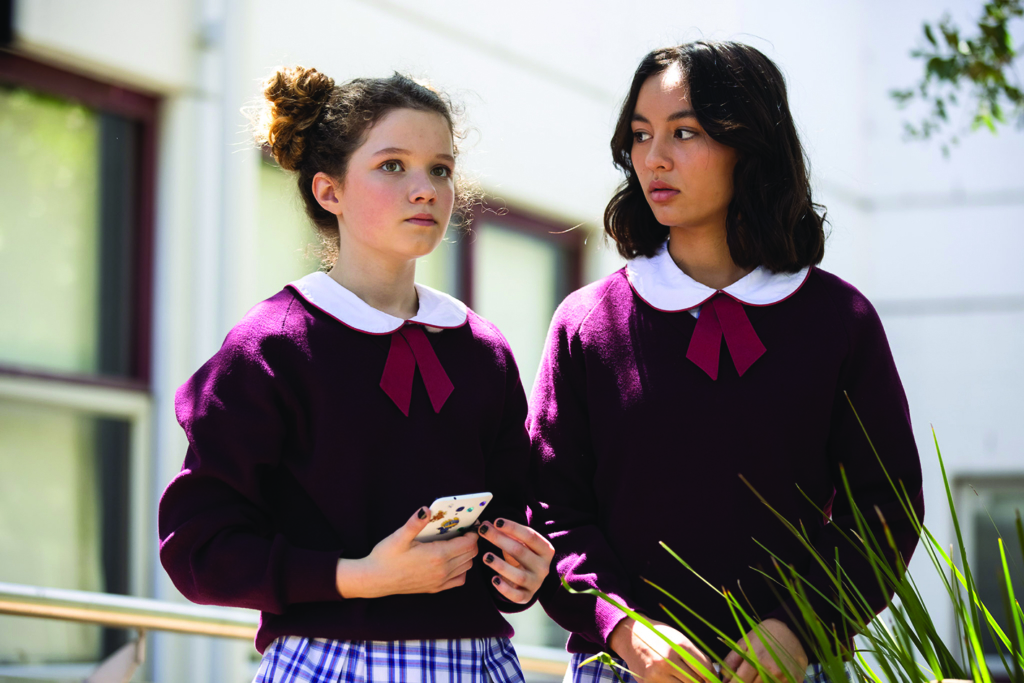
With Blaze, Barton is exploring the same territory with a different set of allegorical tools (though, it must be said, with less success). Specifically, Blaze is about our protagonist realising that men are dangerous, that her place in the world is fraught with peril and that she must conceive of a way of being, a way of understanding, with the knowledge that the world is full of hidden risks that she was heretofore unable to recognise. The film is about not just sexual violence or even male violence against women in general, but the more ubiquitous and insidious notion of male power as a whole, in terms of how women are subjected to the whims of men in even the most prosaic and benign circumstances. A key scene in the film occurs when Blaze is at home with her father, shortly after she has witnessed the assault: as he tries to comfort her, attempting to take her jumper off to ready her for bed, she pleads, ‘Stop moving me.’ Although he is clearly acting from concern, he also pointedly ignores her complaint; her wishes go unheeded. Later, observing her father lying in bed, she envisions him lying on a bed of cherries – an uncomfortably sexual, even Freudian, image. So soon after her trauma, even her own father has become a perversely threatening figure.
The film is about not just sexual violence or even male violence against women in general, but the more ubiquitous and insidious notion of male power as a whole, in terms of how women are subjected to the whims of men in even the most prosaic and benign circumstances.
The problem is that while Barton is able to symbolise Blaze’s journey and gradual transformation as she processes her trauma and newfound knowledge, she and co-screenwriter Huna Amweero are largely unable to dramatise it. It is remarkable that, in a film so redolent with fantastical imagery, the most unbelievable parts are those that take place in the allegedly ‘real’ world. It could be argued that there is no baseline reality here: although Barton often employs a blue-and-grey colour palette to let us know that we are, for now, engaging with humdrum, everyday ‘reality’, the generally subjective, impressionistic style applied almost across the board in the film blurs the line too much – a problem shared by fellow Australian coming-of-age fantasy film Girl Asleep (Rosemary Myers, 2015).[4]See Elizabeth Flux, ‘Dream Sequence: Rosemary Myers’ Girl Asleep and Cinematic Coming of Age’, Metro, no. 191, Summer 2017, pp. 6–13. The real-world sequences are just a tad too oblique, a little too coy, to feel ‘real’. And if reality doesn’t feel real, then fantasy has no meaning; we have no baseline for comparison.
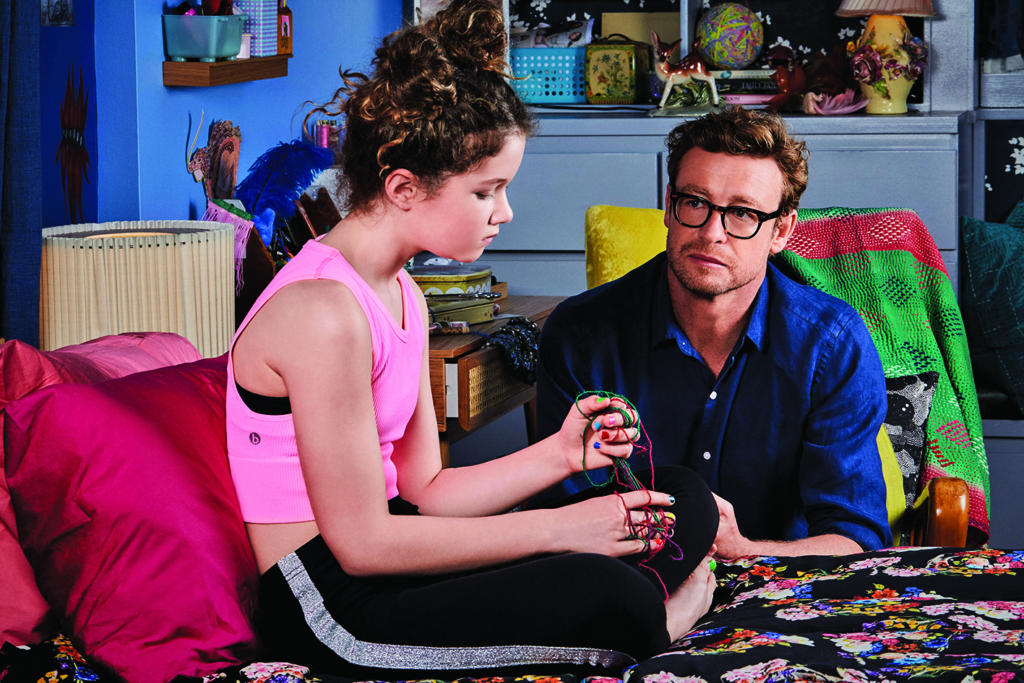
There is also no sense of rising action. Perhaps this is a result of Barton’s usual art practice as a painter and sculptor. What sets cinema apart from other visual arts is its use of time: film lives in the edit, in its ability to expand and contract the moment, in the way temporal elements can be rearranged to evoke new meanings. While Barton has an excellent sense of image and an eye for striking tableaux, one senses that she does not have a firm grasp on the importance of time in film, of how something as simple as pacing is so essential to the cinematic experience. And so Blaze feels more like a series of vignettes than a strong, well-paced, self-contained narrative. It’s ‘this happened and then this happened and then this happened’ until the credits roll. While individual moments (such as a shot of Blaze against a full moon, as Nick Cave croons ‘the moon is a girl’[5]From the Nick Cave and Warren Ellis song ‘Shattered Ground’. on the soundtrack, that evokes primal menstrual imagery; and another in which Blaze and Hannah walk side by side into a vaginal inflatable castle, returning to the conceptual womb as paired victim and witness) absolutely sing, they are, ultimately, just individual moments, and fail to hang together as a whole. And, it must be said, some of Barton’s symbolic choices are simply too on the nose – an argument between Blaze and her father rendered as a literal storm, for example, lands thuddingly.
All this makes for a frustrating viewing experience. Here we have both an important artist and an important subject, but a work that is significantly less successful than the former is capable of and the latter deserves. Blaze is very much a curate’s egg of a film: its boldness of vision and willingness to engage with deeply uncomfortable subject matter are laudable; its disdain for the simple mechanics of storytelling is not. It is formally interesting while remaining narratively simplistic; there is no tension and little sense of catharsis as Barton keeps her characters and their goals deliberately obscure. As such, Blaze feels like it marks the arrival not of an exciting new voice in Australian cinema but of an exciting new eye – and like a film that ultimately functions more as a visual exhibition in motion than a satisfying screen narrative.
Endnotes
| 1 | While this backstory is only hinted at in the film through photographs and news clippings seen in Sarah’s bedroom, it’s made more explicit in ACH Smith’s 1986 novelisation of the film. See Louisa Mellor, ‘Labyrinth: The Unsettling Second Character Played by David Bowie’, Den of Geek, 27 June 2021, <https://www.denofgeek.com/movies/labyrinth-the-unsettling-second-character-played-by-david-bowie/>, accessed 5 September 2022. |
|---|---|
| 2 | See Susan Bye, ‘Celia’, Metro, no. 213, 2022, pp. 114–23. |
| 3 | See Adrian Danks, ‘Bliss’, Metro, no. 207, 2021, pp. 108–19. |
| 4 | See Elizabeth Flux, ‘Dream Sequence: Rosemary Myers’ Girl Asleep and Cinematic Coming of Age’, Metro, no. 191, Summer 2017, pp. 6–13. |
| 5 | From the Nick Cave and Warren Ellis song ‘Shattered Ground’. |
